[Asters: The Genera Canadanthus, Eucephalus, Eurybia, Oreostemma, Seriocarpus and Symphyotrichum West of the Cascade Mountains of Oregon and Washington]
Douglas Aster, Douglas' Aster
Symphyotrichum subspicatum
Synonyms: Aster bulteri, Aster douglasii, Aster maccallae, Aster subspicatus, Aster subspicatus var. grayi, Aster subspicatus var. subspicatus, Symphyotrichum subspicatum var. grayi, Symphyotrichum subspicatum var. subspicatum
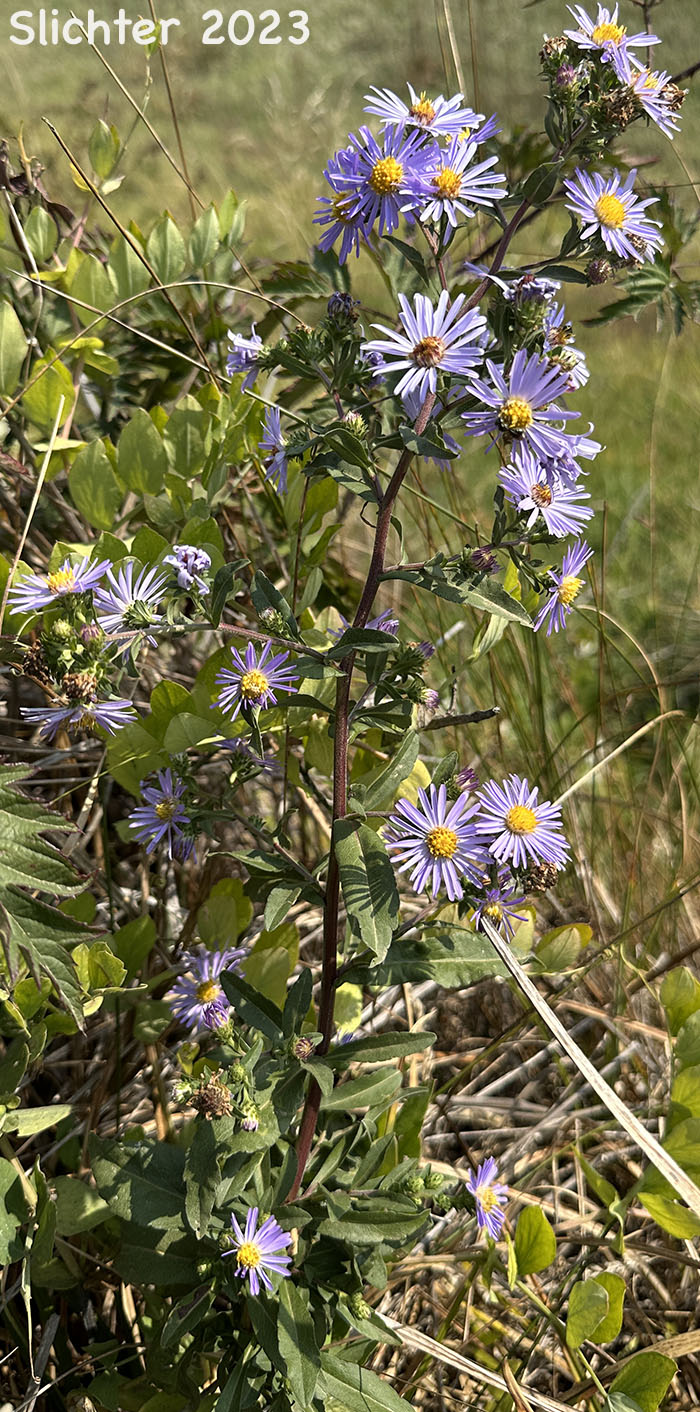
Douglas' aster in bloom along the Beltz Dike Trail, Sitka Sedge State Natural Area.........August 23, 2023.
The
photo at right shows the leafy bracts of the involucre of Douglas' aster from Dalton Point,
Columbia River Gorge...........October 12, 2006.
Characteristics:
Douglas' aster is a rhizomatous perennial wildflower with erect,
usually unbranched stems to 130 cm high. It is highly variable in appearance
and may resemble both leafy aster and Eaton's aster. The lower leaves are oblanceolate,
tapering to a winged petiole. The leaves of mid-stem are lance-shaped and range
from 7-13 cm long and 1-2 cm wide. The blades are smooth and hairless with toothed
margins above mid-blade.
The inflorescence is a cymose panicle with several to many flower
heads which are each 2-4 cm wide. The 20-30 rays are violet and about 1 cm long
and surround the yellow to reddish-purple disk flowers. The involucre is about
5-6 mm long with linear bracts, the outer bracts sometimes leaf-like at the
tip. The bracts loosely overlap and may be pressed down or spreading and green
at the tip with yellow to brown bases and hairy margins. Visible with a hand
lens, each bract has a thin transparent margin.
Habitat:
Douglas' aster is a wildflower of streambanks and other moist
places from low elevations near the seacoast to moderate elevations in mountain
woodlands.
Range:
Aster subspicatus is found from coastal Alaska south
to coastal California and east to Alberta, Montana, northern Idaho and northeastern
Oregon. It is most common west of the Cascade Mts.
In the Columbia River gorge, it may be found between the elevations
of 0'-2000' the length of the Gorge.

Upper leaf surface of Douglas' aster from Dalton
Point, Columbia River Gorge..........September 9, 2001. Note the short
hairs along the margin of the leaf and the few serrations.
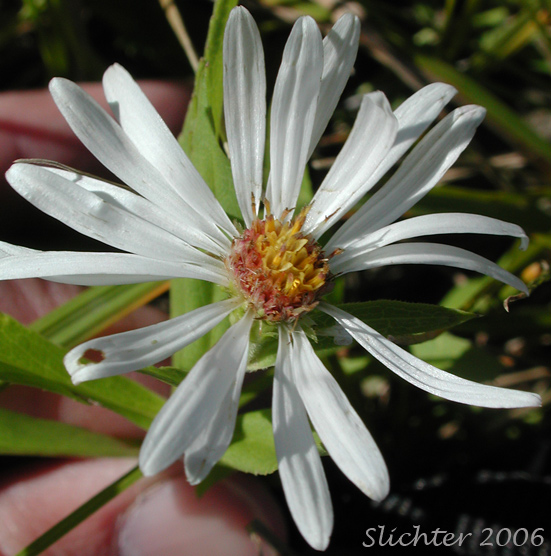 -
- 
Two views of the flower head of Douglas' aster from Dalton Point, western Columbia River Gorge..........October 12, 2006.
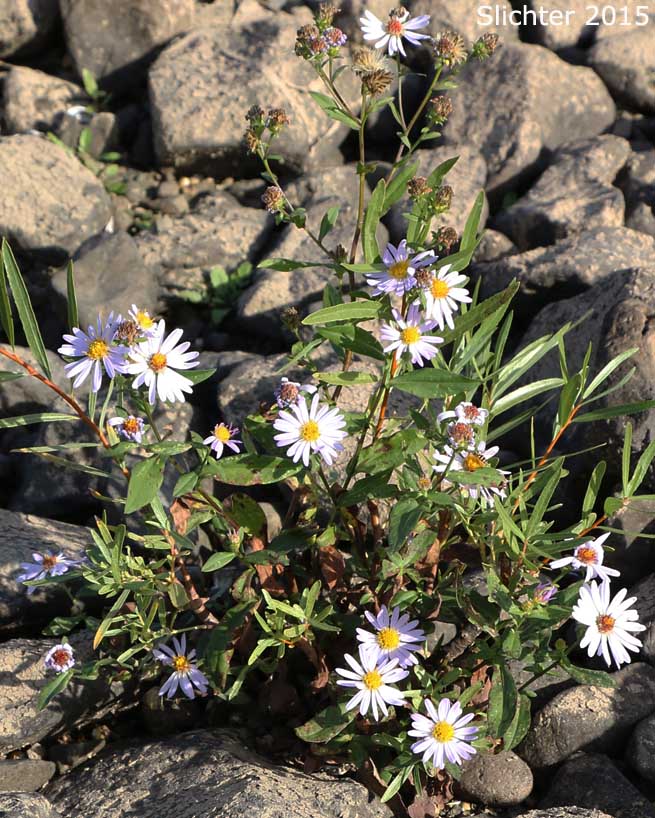 -
- 
Douglas' aster as seen at left on the cobbly Columbia River shoreline with a young coyote willow (Salix exigua) at the McCord Creek delta.........October 14, 2015. The photo at right shows Douglas' aster blooming in forest clearings along the Pacific Crest Trail near Bonneville Dam, Columbia River Gorge National Scenic Trail......September 9, 2018.
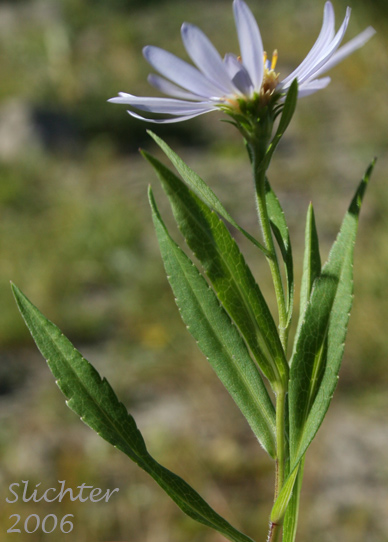 -
- 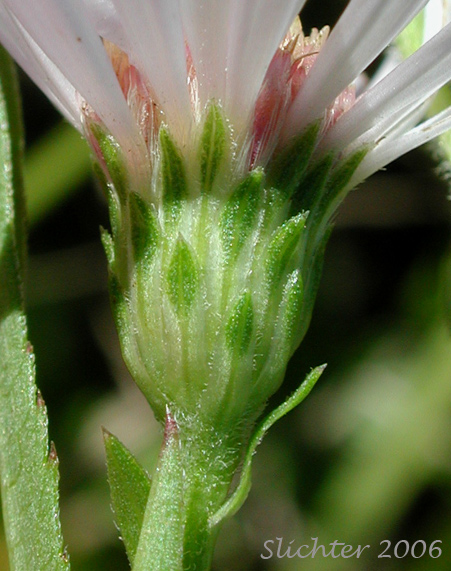
The photo above shows the upper stem leaves and flower head (left) and close-up view of the involucral bracts (right) of Douglas' aster as seen from Dalton Pt., the western Columbia
River Gorge.........October 12, 2006. Note the broad white margins at the base of each bract, a characteristic of this species.
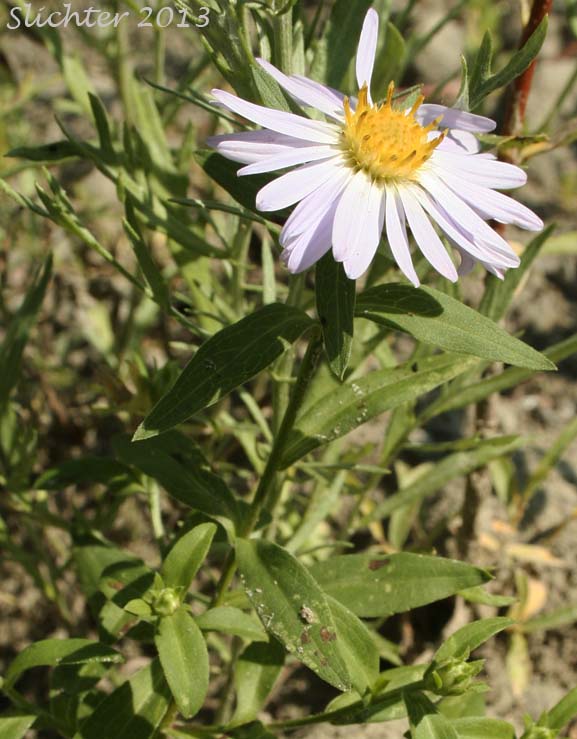 -
- 
The photo at left shows Douglas' aster as seen blooming from the Columbia River shoreline at the Sandy River Delta...........September 13, 2013. The photo at right shows Douglas' aster as seen on cobbly soils along the Columbia River shoreline at Pierce National Wildlife Refuge..........September 27, 2014.
 -
- 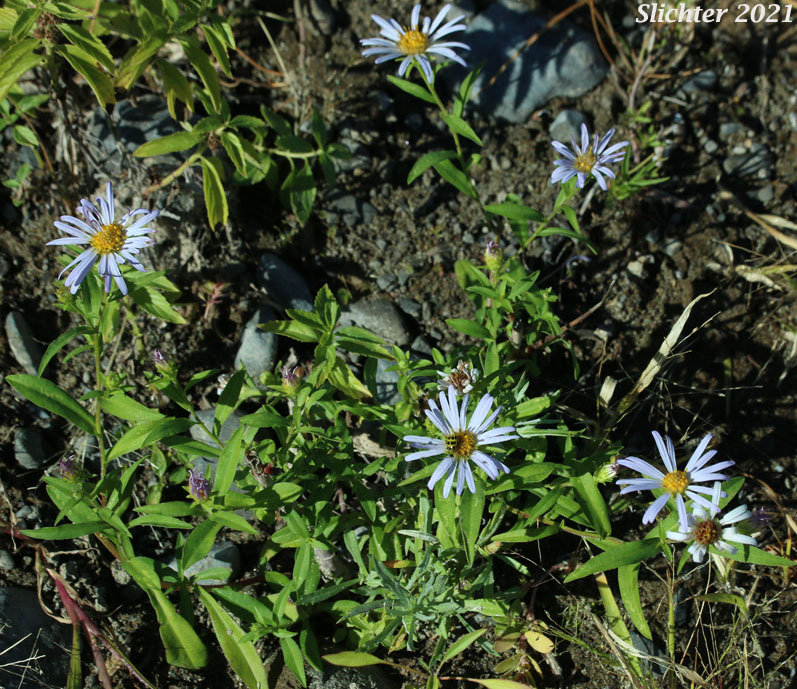
Douglas' aster observed on the north shoreline of Pierce Island, Columbia River Gorge......October 7, 2021.
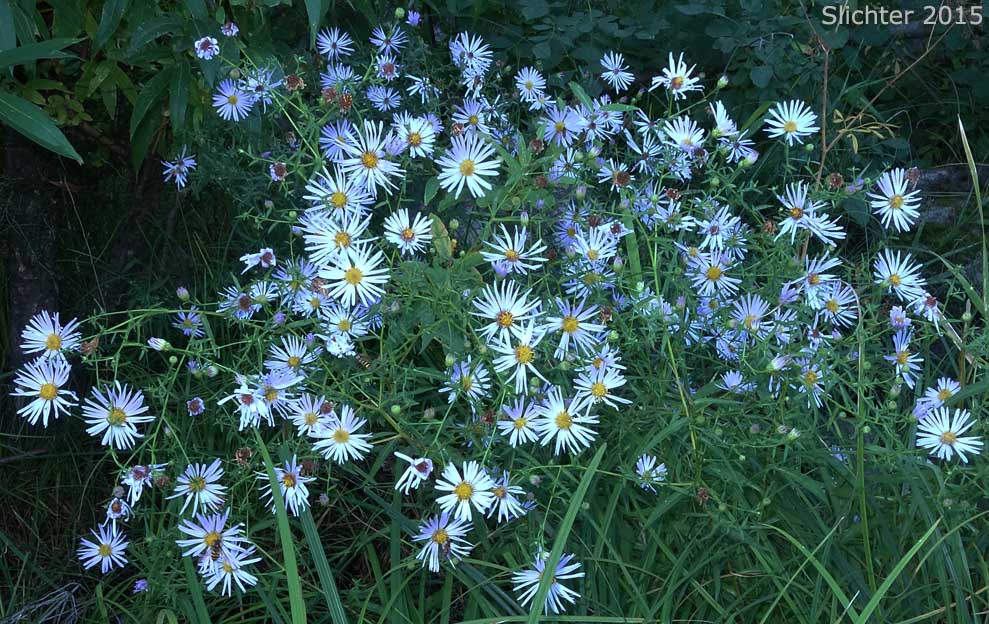 -
- 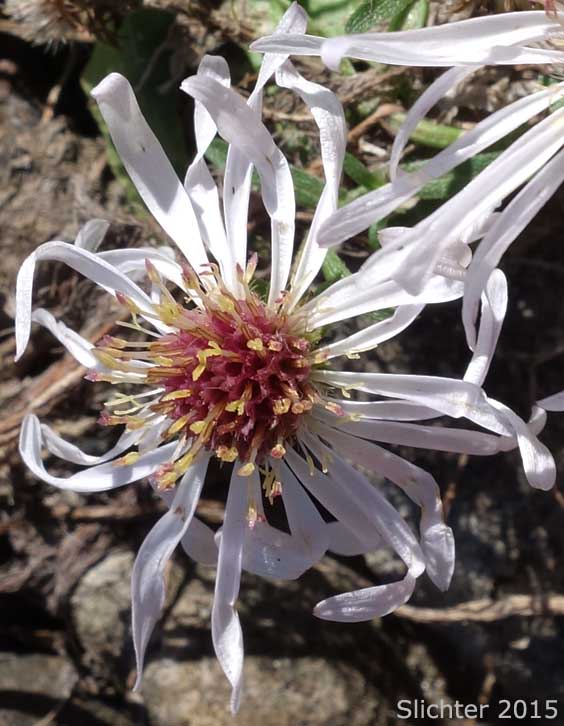
Douglas' aster as seen on cobbly soils along the Columbia River shoreline at Dalton Point west of Multhnomah Falls..........September 26, 2015.
Paul Slichter













